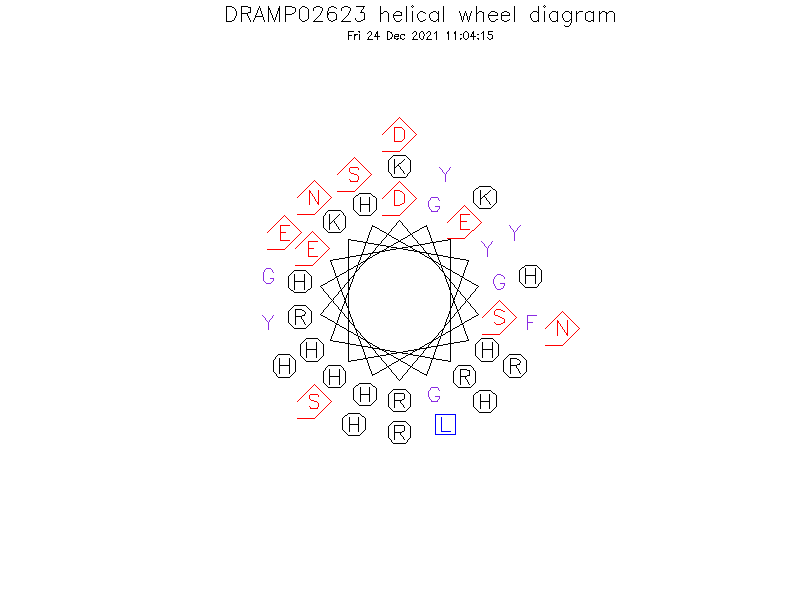General Information
-
DRAMP ID
- DRAMP02623
-
Peptide Name
- Macaque histatin (His-rich; M-Histatin 1; primates, mammals, animals)
-
Source
- Macaca fascicularis (Crab-eating macaque) (Cynomolgus monkey)
-
Family
- Belongs to the histatin family
-
Gene
- HTN1
-
Sequence
- DSHEERHHGRHGHHKYGRKFHEKHHSHRGYRSNYLYDN
-
Sequence Length
- 38
-
UniProt Entry
- P34084
-
Protein Existence
- Protein level
Activity Information
-
Biological Activity
- Antimicrobial, Antibacterial, Antifungal
-
Target Organism
- No MICs found in DRAMP database
-
Hemolytic Activity
-
- No hemolysis information or data found in the reference(s) presented in this entry
-
Cytotoxicity
-
- Not included yet
-
Binding Target
- Not found
Structure Information
-
Linear/Cyclic
- Not included yet
-
N-terminal Modification
- Not included yet
-
C-terminal Modification
- Not included yet
-
Nonterminal Modifications and Unusual Amino Acids
- Not included yet
-
Stereochemistry
- Not included yet
-
Structure
- Not found
-
Structure Description
- Not found
-
Helical Wheel Diagram
-
PDB ID
- None
-
Predicted Structure
- There is no predicted structure for DRAMP02623.
Physicochemical Information
-
Formula
- C207H294N78O58
Absent Amino Acids
- ACIMPQTVW
Common Amino Acids
- H
Mass
- 4803.1
PI
- 9.6
Basic Residues
- 18
Acidic Residues
- 5
Hydrophobic Residues
- 2
Net Charge
- +13
-
Boman Index
- -188.1
Hydrophobicity
- -2.455
Aliphatic Index
- 10.26
Half Life
-
- Mammalian:1.1 hour
- Yeast:3 min
- E.coli:>10 hour
Extinction Coefficient Cystines
- 5960
Absorbance 280nm
- 161.08
Polar Residues
- 13
DRAMP02623

Comments Information
Function
- Histatins are salivary proteins that are considered to be major precursors of the protective proteinaceous structure on tooth surfaces (enamel pellicle). In addition, histatins exhibit antibacterial and antifungal activities.
Literature Information
- ·Literature 1
-
Title
- Primary structure and anticandidal activity of the major histatin from parotid secretion of the subhuman primate, Macaca fascicularis.
-
Pubmed ID
- 2229609
-
Reference
- J Dent Res. 1990 Nov;69(11):1717-1723.
-
Author
- Xu T, Telser E, Troxler RF, Oppenheim FG.

